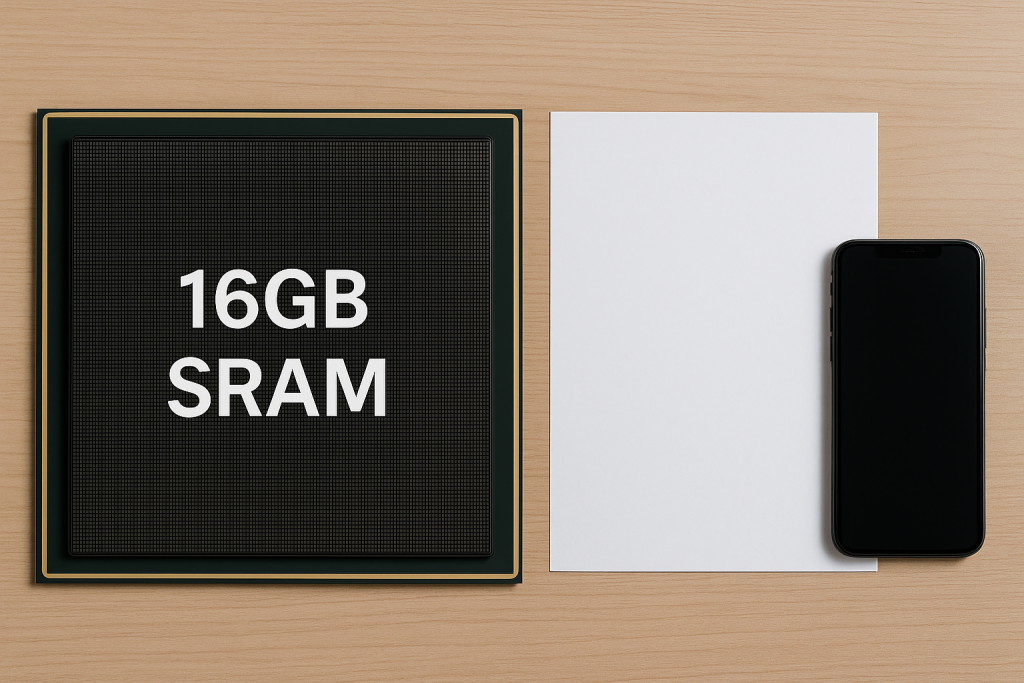Sharing notes from my ongoing learning journey — what I build, break and understand along the way.
Why CPU Cache Is Hundreds of Times Faster Than RAM
Understanding CPU Cache vs RAM: Speed, Technology, and Memory Hierarchy
Since I started learning about computer architecture, one of the things that surprised me the most is this: CPUs are insanely fast, but RAM can’t keep up. That’s why we have something called cache sitting between them. In this post, I’ll try to explain in my own words why CPU cache is hundreds of times faster than RAM.
The Race Between CPU and Memory
Modern CPUs can perform billions of operations per second. But to use that power, they constantly need data. If the CPU had to wait for RAM every time, it would spend most of its time idle.
For example:
- Accessing data from CPU registers takes just a few cycles,
- Accessing RAM can take hundreds of cycles.
That’s a difference of hundreds of times.
It’s About Physical Proximity
The first reason cache is so fast is actually simple: where it’s located.
- CPU Cache is built directly into or right next to the CPU. Signals only need to travel a few nanometers.
- RAM sits on the motherboard, much farther away. Communication with RAM goes through a memory controller and buses, which adds significant delay.
Think of cache as the “drawer next to your desk,” while RAM is “the storage room down the hall.”
Technology Matters: SRAM vs DRAM
Cache and RAM are built using different technologies:
- Cache (SRAM – Static RAM):
- Each cell is made up of several transistors.
- Doesn’t require constant refreshing.
- Extremely fast.
- Downside: expensive, takes up more space.
- RAM (DRAM – Dynamic RAM):
- Each cell uses a capacitor + transistor.
- Capacitors lose charge and need to be refreshed constantly.
- This refresh slows things down.
- Upside: cheap and scalable to gigabytes.
In short: Cache = a Ferrari, RAM = a truck. One is built for speed, the other for capacity.
Data Paths and Delays
The connection between CPU and cache is extremely wide and direct, so there’s almost no waiting.
Accessing RAM, on the other hand, is more complex:
- The memory controller has to decode the address,
- Open the right row in DRAM,
- Fetch the data.
All of this can take hundreds of cycles.
Smart Mechanisms in Cache
Cache isn’t just fast — it’s smart:
- Prefetching: The CPU guesses what you’ll need next and loads it ahead of time.
- Cache lines: Data is fetched in 64-byte blocks, so when you get one value, its neighbors are already waiting.
- Multi-level caches (L1, L2, L3): The CPU checks the smallest/fastest cache first, then progressively larger/slower ones, only going to RAM if it has to.
This layered design is a clever way to hide RAM’s slowness.
Numbers That Put It in Perspective
- L1 Cache: ~1–3 ns
- L2 Cache: ~4–10 ns
- L3 Cache: ~20–40 ns
- RAM: ~80–120 ns
- SSD: 50,000+ ns
- HDD: millions of ns
As you can see, cache is literally hundreds of times faster than RAM.
Why Not Just Make RAM Like Cache?
Fair question: why not build all memory out of SRAM (like cache)?
The problem is:
- Cost: SRAM is way more expensive.
- Size: It takes up much more physical space.
- Power: Consumes more energy.
If you tried to make 16GB of RAM with SRAM, it would be huge and cost a fortune.
That’s why we use a hierarchy: a little bit of super-fast cache, a larger chunk of reasonably fast RAM, and massive but slow storage (SSD/HDD).

Even if we built SRAM as a DIMM, it still wouldn’t make sense. Access would be only about 2× faster than DRAM, but still tens of times slower than true on-chip CPU cache.
In Short
CPU cache is hundreds of times faster than RAM because:
- It’s physically inside or next to the CPU.
- It uses SRAM technology (no refreshing needed).
- It connects via wide, direct buses.
- It’s backed by smart techniques like prefetching and cache lines.
RAM, built with DRAM, is cheaper and bigger, but inherently slower.
Together, they strike a balance between speed and capacity, making our computers both fast and affordable.
What I’ve realized is this: without cache, computers wouldn’t feel nearly as fast. CPUs would be held back by RAM speeds, and we wouldn’t enjoy the instant responsiveness we take for granted today. Cache is one of those invisible heroes of computer architecture that makes modern computing possible.
